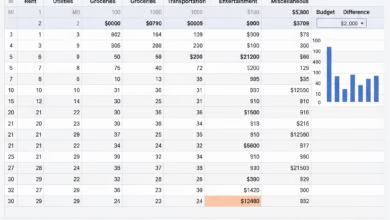Have you ever heard of Investment Insurance?
Find out what investment insurance is and how it works

In the world of personal finance, we are taught to insure our most valuable assets. We buy insurance for our homes, our cars, and our health. But what about our investment portfolio, which for many represents a lifetime of savings and the foundation of their financial future? The question naturally arises: can you insure your investments?
The answer is a resounding yes, but it’s not as simple as buying a single policy. There is no product you can buy that will protect you from a bad investment decision or a stock market crash. The risk of losing money due to market fluctuations is a fundamental part of investing. However, a robust, multi-layered system of protections exists in North America designed to safeguard your assets from a different kind of disaster: the failure of a financial institution.
This is not a single product, but a web of safeguards, from government-backed corporations to private insurance policies held by brokerage firms. Understanding this system is not just an academic exercise; it’s a critical component of risk management for every serious investor. This guide will walk you through the different types of “investment insurance,” explain what they cover, reveal their limitations, and empower you to build a more secure financial future.
The Foundation of Investor Protection: SIPC and CIPF Explained

The first and most important layer of protection for most investors is insurance on their brokerage accounts. This coverage protects the assets you hold in your investment accounts—stocks, bonds, mutual funds, and cash—in the event that your brokerage firm fails financially.
In the United States: The Securities Investor Protection Corporation (SIPC)
The SIPC is a non-profit, non-government, member-funded corporation created under the Securities Investor Protection Act of 1970. Virtually all legitimate brokerage firms registered with the Securities and Exchange Commission (SEC) are required to be SIPC members.
- What it covers: SIPC protects the “custody function” of a brokerage. This means it protects the securities and cash that the firm is holding for you.
- Coverage Limits: SIPC provides coverage up to $500,000 in total value per customer, which includes a $250,000 limit for cash held in the account. This coverage is per customer, per “separate capacity” (e.g., an individual account, a joint account, and a retirement account are all treated as separate customers).
- What it DOES NOT cover: This is the most critical point to understand. SIPC does not protect against market losses. If you buy a stock for $10,000 and it drops to $2,000, SIPC provides no benefit. It also does not protect against bad investment advice or worthless securities that were fraudulent from the start. It only protects you if your firm goes bankrupt and your assets are missing.
In Canada: The Canadian Investor Protection Fund (CIPF)
CIPF is the Canadian equivalent of SIPC, sponsored by the Investment Industry Regulatory Organization of Canada (IIROC). It provides protection for investors if their investment firm becomes insolvent.
- Coverage Limits: CIPF provides a higher limit, covering up to $1 million CAD for all general accounts combined (like cash, margin, and TFSAs), plus an additional $1 million for all registered retirement accounts combined (like RRSPs and RRIFs), and another $1 million for all registered education savings plans (RESPs) combined.
- Similar Exclusions: Like SIPC, CIPF does not protect against market losses, nor does it cover losses from unsuitable investments or scams. Its purpose is solely to ensure your property is returned to you if your investment dealer fails.
What Happens if Your Brokerage Firm Fails? A Step-by-Step Look
The idea of a brokerage firm going bankrupt is terrifying, but thanks to SIPC and CIPF, the process for the customer is usually seamless and far from catastrophic.
- A Trustee is Appointed: When a brokerage firm is in deep financial trouble, SIPC or CIPF will typically step in. A court-appointed trustee takes control of the firm’s records and assets.
- The Goal is Asset Transfer, Not Liquidation: The trustee’s primary goal is not to sell off all the assets. Instead, they will attempt to transfer all customer accounts in bulk to another, healthy brokerage firm. In the vast majority of cases, your entire account—stocks, bonds, and all—is moved to a new firm, and you can access it within a few days or weeks without any loss.
- When Claims are Necessary: A SIPC/CIPF claim only becomes necessary in the rare event of a shortfall, usually due to fraud, where customer assets are actually missing from the failed firm’s books. If, for example, you had 100 shares of Apple and the trustee can only locate 90 of them, SIPC would step in to provide the cash value of the missing 10 shares (up to the coverage limits).
- Filing a Claim: If a transfer is not possible or if there is a shortfall, the trustee will notify all customers and provide them with claim forms. Customers then have a specific period to file a claim for the value of their missing assets.
Historically, over 99% of eligible investors in SIPC-liquidated firms have gotten their assets back. The system is incredibly effective at what it is designed to do: protect investors from the failure of their financial custodian.
Going Beyond the Standard: Understanding ‘Excess SIPC’ Insurance

Recognizing that many high-net-worth investors have accounts that exceed the $500,000 SIPC limit, many major brokerage firms have taken an extra step to secure customer confidence. They purchase supplemental insurance from private insurance syndicates, most notably Lloyd’s of London. This is known as “Excess SIPC” insurance.
This supplemental coverage significantly increases the protection available to each client. For example, a large firm might offer an aggregate limit of $1 billion in coverage. This means that after SIPC’s $500,000 is exhausted, the private insurance would cover losses for each customer up to tens of millions of dollars for securities and often around $1.9 million for cash.
When choosing a brokerage firm, especially if you plan to hold a large portfolio, asking about their Excess SIPC coverage is a crucial piece of due diligence. It demonstrates the firm’s commitment to customer asset protection and provides a significant extra layer of security.
Insuring Your Safest Investments: The Role of FDIC and CDIC
While SIPC and CIPF protect assets in brokerage accounts, another form of insurance protects the cash and cash-equivalent portions of your portfolio held at banking institutions.
In the United States: The Federal Deposit Insurance Corporation (FDIC)
The FDIC is an independent agency of the U.S. government that protects depositors against the loss of their insured deposits if an FDIC-insured bank or savings association fails.
- What it covers: Checking accounts, savings accounts, money market deposit accounts, and Certificates of Deposit (CDs).
- Coverage Limits: The standard insurance amount is $250,000 per depositor, per insured bank, for each account ownership category. The “ownership category” is key; it allows you to insure far more than $250,000 at a single bank by using different account types (e.g., an individual account, a joint account, and a trust account).
In Canada: The Canada Deposit Insurance Corporation (CDIC)
The CDIC is a federal Crown Corporation that provides deposit insurance for its member institutions.
- Coverage Limits: CDIC insures eligible deposits up to $100,000 CAD per depositor in each of seven separate categories at each member institution. These categories include accounts held in one name, jointly, in a trust, RRSPs, RRIFs, RESPs, and TFSAs.
For investors, FDIC/CDIC insurance makes cash, and especially CDs, one of the safest asset classes possible. It guarantees the return of your principal (up to the limits) no matter what happens to the bank, making it the bedrock of a conservative investment strategy.
When Your Investment Is an Insurance Product: The Case for Annuities

Annuities are unique because they are not securities or bank deposits; they are contracts issued by insurance companies. They are often used as an investment vehicle to provide a guaranteed stream of income in retirement. So, what happens if the insurance company that sold you the annuity fails?
They are not protected by SIPC or the FDIC. Instead, they are protected by State Guaranty Associations. Every state has a non-profit association, funded by assessments on member insurance companies, that will step in to protect policyholders if an insurer becomes insolvent.
- How it works: If an insurer fails, the state guaranty association will work to transfer the policies to a healthy insurer. If that’s not possible, it will provide coverage up to state-specified limits.
- Coverage Limits: These limits vary by state but are substantial. A common limit is $250,000 for the present value of an annuity’s benefits and often $300,000 or $500,000 for life insurance death benefits.
This system ensures that even your insurance-based investments have a powerful safety net, though it’s important to note that the financial health of the issuing insurance company is still the primary line of defense.
Can Your Financial Advice Be Insured? The Indirect Protection of E&O Policies
What if the risk isn’t the failure of a firm, but the failure of your advisor to do their job properly? While SIPC doesn’t cover bad advice, there is an indirect insurance that does: Errors & Omissions (E&O) insurance.
E&O insurance is a form of professional liability insurance that all reputable financial advisors and their firms are required to carry. It protects them from lawsuits and, by extension, protects their clients from financial harm caused by:
- Negligence
- Mistakes or errors in financial reporting
- Providing unsuitable investment recommendations
- Breach of fiduciary duty
If you suffer a financial loss because of a demonstrable error or act of negligence by your advisor, you can file a complaint or lawsuit. The advisor’s E&O policy is the source of funds that would ultimately compensate you for that loss. While you don’t own this policy, its existence is a critical form of protection for investors who rely on professional advice.
Building a Truly “Insured” Investment Strategy

The concept of “investment insurance” is not about eliminating risk, but about managing and mitigating specific types of catastrophic events. You can never insure yourself against the inherent ups and downs of the market. That risk is the price of admission for the potential of long-term growth.
However, a truly secure investment strategy is built on a foundation of understanding and utilizing the powerful protections that are available to you. It involves:
- Verifying Firm Membership: Ensuring your brokerage is a member of SIPC (in the U.S.) or CIPF (in Canada) and that your bank is a member of the FDIC or CDIC.
- Understanding Coverage Limits: Structuring your accounts across different institutions or ownership categories to maximize your protection if you have a high net worth.
- Inquiring About Supplemental Coverage: Choosing a brokerage firm that offers robust “Excess SIPC” insurance for an added layer of security.
- Performing Due Diligence: Recognizing that the ultimate guarantee on products like annuities or principal-protected notes is the financial strength of the issuing company.
By understanding how these different layers of insurance work together, you can confidently build a portfolio that is protected not just from market volatility, but from the institutional risks that can undermine even the most carefully crafted financial plan.





